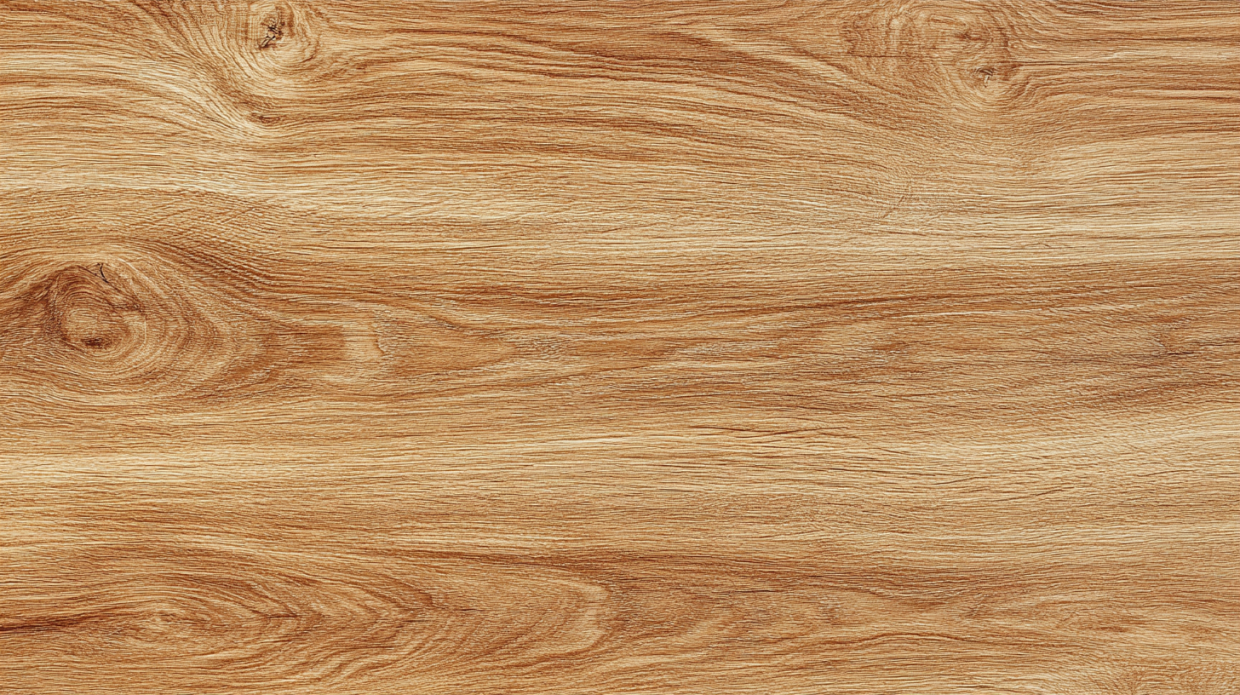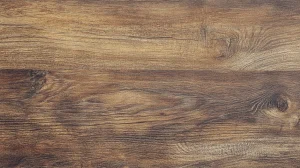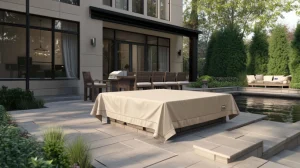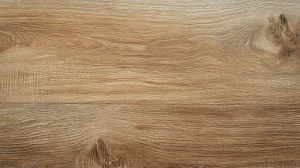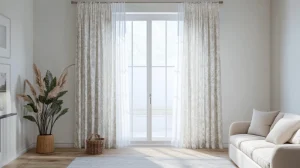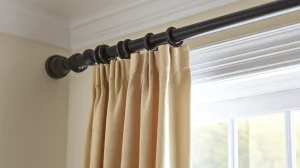
Style Selections Tawny Oak Brown Wood look 6-mil x 6-in W x 36-in L Waterproof and Water Resistant Interlocking Luxury Vinyl Plank Flooring ( 22.17-sq ft Carton )
- Style Selections waterproof luxury vinyl plank flooring is easy to install and ideal for everyday living at a great value
Bringing Nature’s Warmth Into Your Home Without Breaking the Bank
In the realm of home renovations, few decisions have as profound an impact on the atmosphere of your living space as your choice of flooring. Among the myriad options available today, one product has been consistently catching the attention of homeowners and designers alike: Style Selections Tawny Oak flooring. This versatile, affordable, and aesthetically pleasing option has become increasingly popular for those seeking to infuse their homes with the timeless charm of oak without the premium price tag of traditional hardwood.
As someone who has witnessed countless flooring trends come and go over the years, I’ve developed a particular appreciation for products that strike the perfect balance between quality, appearance, and value. Style Selections Tawny Oak does exactly that, offering a compelling solution for modern homeowners who refuse to compromise on either beauty or practicality.
Whether you’re renovating your entire home, updating a single room, or simply exploring your options for future projects, this comprehensive guide will walk you through everything you need to know about this remarkable flooring option. From its composition and appearance to installation techniques and maintenance requirements, I’ll leave no plank unturned in our exploration of Style Selections Tawny Oak flooring.
What Exactly Is Style Selections Tawny Oak Flooring?
Before diving into the specifics, let’s clarify what we’re talking about. Style Selections is a private label brand exclusively available at Lowe’s home improvement stores. The Tawny Oak line is one of their most popular flooring options, appreciated for its warm, natural appearance that convincingly mimics genuine oak hardwood.
Style Selections Tawny Oak is not traditional hardwood but rather a high-quality vinyl plank flooring (LVP) designed to replicate the look of natural oak. This distinction is crucial for understanding both its advantages and limitations. As a luxury vinyl product, it consists of multiple layers that work together to create a durable, water-resistant, and aesthetically pleasing flooring solution.
The core of these planks is typically made from a rigid composite material that provides stability and resistance to temperature fluctuations. Above this layer sits a detailed photographic layer that captures the intricate grain patterns and warm coloration of genuine tawny oak. The planks are then topped with a transparent wear layer that protects against scratches, stains, and everyday wear.
What sets Tawny Oak apart from many competing products is the attention to detail in its design. The surface features realistic texture patterns that not only look like natural wood but also feel convincingly similar underfoot. The color profile—a rich, medium-toned brown with subtle honey and amber undertones—creates a versatile backdrop that complements virtually any interior design style, from rustic farmhouse to sleek contemporary.
Where to Purchase Style Selections Tawny Oak Flooring
As mentioned earlier, Style Selections is Lowe’s exclusive house brand, meaning that Lowe’s home improvement stores are the sole authorized retailer for this specific flooring line. This exclusivity has both advantages and disadvantages for consumers.
On the positive side, the widespread presence of Lowe’s stores across North America makes the product readily accessible to most consumers. With over 2,200 locations, chances are good that you have a store within reasonable driving distance. The company’s robust online presence also allows for convenient browsing and ordering from home, with options for home delivery or in-store pickup depending on your preference and location.
The Lowe’s website frequently features detailed product specifications, customer reviews, and sometimes even installation videos that can help you make an informed decision. Their regular sales and promotions can also present opportunities to purchase the flooring at discounted prices, particularly during major holidays and seasonal renovation periods.
However, the exclusive distribution also means you’re limited in your ability to comparison shop across different retailers. If you’re the type of consumer who likes to visit multiple stores to compare products hands-on, you’ll need to rely entirely on Lowe’s in-store displays to evaluate this particular flooring option.
For the most current availability information, I recommend checking the Lowe’s website or contacting your local store directly. Stock can vary by location, and certain styles or quantities may require special ordering with associated lead times.
The Cost Factor: Is Style Selections Tawny Oak Budget-Friendly?
One of the most compelling aspects of Style Selections Tawny Oak flooring is its price point. In an era where genuine hardwood flooring can easily exceed $10-15 per square foot (and sometimes much more for premium varieties), Style Selections Tawny Oak typically ranges from $2.50 to $3.50 per square foot, making it a remarkably affordable alternative.
This price point positions it in the mid-range for vinyl plank flooring—less expensive than many premium LVP brands but offering superior quality compared to budget options. The value proposition becomes even more apparent when you consider the reduced installation costs compared to traditional hardwood. While professional installation will add to your overall project budget, the click-lock design makes DIY installation feasible for moderately skilled homeowners, potentially saving hundreds or even thousands of dollars on larger projects.
Beyond the initial purchase price, it’s worth considering the long-term value equation. With proper care, Style Selections Tawny Oak can last 15-20 years in residential settings—not quite as long as solid hardwood (which can last generations with refinishing), but considerably longer than carpet or lower-quality flooring options. When you factor in its resistance to water damage, scratches, and stains, the maintenance costs over the lifetime of the product are also typically lower than many alternatives.
Lowe’s frequently offers promotional pricing on their flooring products, so timing your purchase around seasonal sales events can yield additional savings. They also occasionally provide special financing options for larger purchases, which might be worth exploring for whole-house flooring projects.
It’s also worth noting that while the per-square-foot cost is attractive, additional materials such as underlayment, transition strips, and moldings will add to your total project cost. A comprehensive budget should include not just the flooring itself but all associated materials needed for a complete installation.
The Composition Question: Vinyl, Laminate, or Hardwood?
A common source of confusion for many consumers is understanding exactly what type of product Style Selections Tawny Oak actually is. To be absolutely clear: Style Selections Tawny Oak is a luxury vinyl plank (LVP) flooring, not laminate or hardwood.
This distinction matters significantly for several reasons:
As a vinyl product, Tawny Oak offers superior water resistance compared to traditional laminate flooring. While laminate typically uses a fiberboard core that can swell and warp when exposed to moisture, vinyl plank flooring utilizes synthetic materials throughout its construction, making it inherently more resistant to water damage.
Compared to genuine hardwood, vinyl obviously cannot be sanded and refinished. However, it also doesn’t expand and contract with seasonal humidity changes to the same degree, resulting in fewer gaps and less maintenance over time.
The specific construction of Style Selections Tawny Oak includes:
- A wear layer (typically 8-12 mil thick) that protects against scratches and stains
- A printed vinyl layer featuring high-resolution imagery of oak wood grain
- A rigid core layer providing stability and some impact resistance
- A backing layer that may include some sound-dampening properties
This multi-layer construction creates a product that delivers impressive performance despite its affordable price point. The vinyl composition makes it suitable for areas where traditional hardwood would be problematic, such as basements, bathrooms, and kitchens.
For environmentally conscious consumers, it’s worth noting that vinyl is a synthetic, petroleum-based product. While this has implications for its end-of-life recyclability and ecological footprint, modern manufacturing processes have improved significantly. Some vinyl flooring now incorporates recycled content and produces fewer volatile organic compounds (VOCs) than older generations of vinyl products.
Dimensions and Specifications: Getting to Know the Details
Understanding the precise dimensions of Style Selections Tawny Oak planks is essential for planning your flooring project accurately. The exact specifications may vary slightly between production runs, but generally, these planks measure approximately 7 inches wide by 48 inches long. This rectangular format creates a pleasing visual effect that enhances the wood-like appearance while remaining in proportion with most residential spaces.
The thickness of Style Selections Tawny Oak planks typically ranges between 4mm and 5mm (approximately 3/16 inch), including the wear layer. The wear layer itself—the transparent protective surface that guards against scratches and stains—is usually 8-12 mil thick (where 1 mil equals 0.001 inch). A thicker wear layer generally indicates better durability and longer lifespan, particularly in high-traffic areas.
Each box of flooring typically covers about 23-24 square feet, though this can vary. When calculating how much flooring to purchase, industry experts recommend adding 5-10% extra to account for cuts, waste, and potential future repairs. For rooms with many corners, doorways, or irregular shapes, leaning toward the higher end of that range (10% extra) is advisable.
The planks feature beveled edges that create subtle definition between each piece when installed, enhancing the authentic wood look. This detail, while seemingly minor, contributes significantly to the overall aesthetic appeal of the installed floor by creating natural shadow lines that mimic those found in traditional hardwood installations.
The click-lock edge design (discussed in more detail in the installation section) allows the planks to connect securely without adhesives. The precision of these locking mechanisms is a crucial factor in both installation ease and long-term performance, as they help prevent separation between planks over time.
The Aesthetic Appeal: Color, Texture, and Finish
The visual characteristics of flooring often determine whether it becomes the perfect complement to your interior design or an element that never quite feels right. Style Selections Tawny Oak strikes a balance that works remarkably well in diverse settings thanks to its thoughtfully designed appearance.
The color profile of Tawny Oak can be described as a medium-toned, warm brown with subtle amber and honey undertones. This neutral yet rich coloration provides enough visual interest to add character to a space without overwhelming other design elements. The color walks the line between contemporary and traditional, making it adaptable to various design styles from modern farmhouse to transitional to classic.
What truly elevates Style Selections Tawny Oak beyond many budget-friendly alternatives is its texture. The surface features embossed grain patterns that not only visually replicate the natural variations found in genuine oak but also provide tactile texture underfoot. This embossing technology, known as “embossed in register” (EIR), aligns the textural elements precisely with the printed grain pattern, creating a remarkably convincing simulation of natural wood.
The finish has a low to medium sheen—not completely matte but certainly not high-gloss. This balanced luster level helps hide minor scratches and dust while reflecting just enough light to add dimension to the floor. The lower sheen also tends to look more authentic, as most modern hardwood finishes have moved away from the high-gloss styles popular in previous decades.
Each plank features subtle color variations that mimic the natural diversity found in real wood. These variations prevent the monotonous, obviously artificial appearance that plagued earlier generations of vinyl flooring. Knots, mineral streaks, and grain irregularities are thoughtfully incorporated into the design, though generally in moderation—you won’t find the extreme character marks that might appear in rustic-grade hardwood.
For homeowners concerned about coordinating with existing woodwork, Tawny Oak’s middle-of-the-road coloration makes it relatively easy to pair with oak, maple, or even walnut cabinetry and trim. It’s neutral enough to complement rather than clash with adjacent wood elements, even when they’re not an exact match.
Water Resistance: A Major Advantage
One of the most significant advantages of Style Selections Tawny Oak over traditional hardwood or laminate options is its exceptional water resistance. This characteristic makes it suitable for areas where moisture exposure is common, including kitchens, bathrooms, basements, and entryways.
To be clear, Style Selections Tawny Oak is water-resistant but not completely waterproof. The distinction is important: while it can withstand occasional spills, splashes, and damp mopping without damage (provided they’re promptly addressed), it’s not designed for installation in consistently wet environments like outdoor spaces or shower floors.
The water resistance stems from the vinyl composition of the planks—unlike laminate or hardwood, which contain wood fibers that absorb moisture, vinyl is inherently water-repellent. The tight-fitting click-lock installation system also helps prevent water from seeping between planks and reaching the subfloor below.
This water resistance provides practical advantages for families with children, pets, or simply the normal accidents of daily life. A spilled drink or pet accident won’t immediately damage the flooring as it might with traditional hardwood. However, it’s worth noting that standing water should still be promptly removed, as prolonged exposure can eventually compromise the locking mechanisms between planks or potentially seep around the edges to affect the subfloor.
For bathrooms and other high-moisture areas, proper installation becomes even more critical. Leaving the recommended expansion gap around the perimeter is essential, but so is sealing this gap with waterproof silicone caulk where the flooring meets bathtubs, shower bases, or toilet flanges. Some installers also recommend applying a small amount of waterproof silicone to the locking mechanisms in these areas for added protection.
While the planks themselves resist water damage, it’s important to remember that excessive moisture can still affect your home’s subfloor. In basement installations or areas prone to flooding, additional waterproofing measures for the underlying concrete or wood subfloor may be advisable regardless of how water-resistant the vinyl flooring itself may be.
Durability: Standing Up to Life’s Challenges
When investing in new flooring, longevity is a primary concern for most homeowners. Style Selections Tawny Oak has earned a reputation for impressive durability, particularly considering its affordable price point. This resilience makes it suitable for most residential applications, including high-traffic areas like hallways, living rooms, and kitchens.
The durability of vinyl plank flooring is typically measured by two primary factors: the thickness of the wear layer and the overall construction quality. Style Selections Tawny Oak features a wear layer in the 8-12 mil range, which puts it in the medium category for residential use. While not as robust as premium LVP products that might feature 20+ mil wear layers, it provides adequate protection for most household conditions.
This protective surface layer resists scratches from pet claws, furniture movement, and everyday foot traffic. It also prevents stains from common household substances like food, beverages, and cleaning products from penetrating the decorative layer. That said, it’s not impervious to damage—sharp objects dropped with force, dragged heavy furniture, or abrasive cleaning tools can still potentially mar the surface.
The rigid core construction provides good dimensional stability, meaning the planks resist warping, cupping, or expanding that might affect other flooring types. This stability is particularly valuable in areas with fluctuating temperature or humidity levels, where traditional hardwood might develop gaps or laminate might buckle.
Impact resistance is another consideration, particularly for households with children or in kitchens where items may be dropped. The vinyl composition offers some cushioning effect compared to hardwood or ceramic tile, potentially reducing breakage when items fall and providing slightly more comfortable standing for extended periods.
Most manufacturers estimate a lifespan of 15-20 years for mid-range vinyl plank flooring like Style Selections Tawny Oak in residential settings with proper care and maintenance. Commercial applications or extremely high-traffic residential scenarios might see shorter lifespans, particularly in terms of aesthetic wear rather than structural failure.
It’s worth noting that, unlike hardwood, vinyl plank flooring cannot be refinished when the surface eventually shows wear. When it reaches the end of its useful life, replacement is the only option. However, the click-lock installation system does make it relatively straightforward to replace individual damaged planks if necessary, without disturbing the entire floor.
Installation: DIY-Friendly or Professional Job?
One of the most appealing aspects of Style Selections Tawny Oak flooring is its relatively straightforward installation process, thanks to its click-lock installation system. This design feature makes it accessible to DIY enthusiasts while still delivering professional-looking results when installed correctly.
The click-lock system consists of specially designed edges on each plank that physically snap together without requiring adhesives. On one side and end of each plank is a groove, while the opposing sides feature a corresponding tongue. When properly aligned and pressed together, these create a secure mechanical bond that holds the flooring in place while allowing for the natural expansion and contraction that occurs with temperature and humidity changes.
For DIY installation, here’s a simplified overview of the process:
- Acclimate the flooring by leaving it in the installation room for 48 hours
- Prepare the subfloor by ensuring it’s clean, dry, and level (within 3/16″ over 10 feet)
- Install appropriate underlayment if required (discussed in more detail below)
- Begin laying planks from one corner of the room, maintaining a 1/4″ expansion gap around all fixed objects and walls
- Stagger end joints between rows by at least 6″ for structural integrity and visual appeal
- Use a tapping block and pull bar for tight seams without damaging the locking mechanism
- Install appropriate transition strips where the flooring meets different flooring types
- Add quarter round or baseboard molding to cover expansion gaps while allowing for movement
The floating installation method (where the floor is not attached to the subfloor) makes this process considerably faster than traditional nail-down hardwood or glue-down vinyl. An average-sized room (10′ x 12′) can typically be completed in a single day by a moderately skilled DIYer, compared to multiple days for traditional hardwood installation.
While DIY installation is certainly feasible, professional installation offers advantages including speed, precision, proper subfloor preparation, and warranty protection. Many flooring retailers offer installation services, with costs typically ranging from $2-$4 per square foot depending on your location and project complexity. Professional installers also bring specialized tools and experience that can be particularly valuable when dealing with challenging room layouts, transitions between different flooring types, or subfloor issues.
Whether choosing DIY or professional installation, proper preparation of the subfloor is crucial for long-term performance. Style Selections Tawny Oak can be installed over most existing hard surfaces (including concrete, plywood, and existing vinyl) provided they’re structurally sound, level, and clean. Installation over carpet is not recommended and should be avoided even with carpet that seems thin or tightly woven.
Underlayment: Necessary or Optional?
A common question regarding Style Selections Tawny Oak installation concerns underlayment—the thin layer of material placed between the subfloor and the vinyl planks. Whether underlayment is necessary depends primarily on your specific subfloor conditions and performance goals.
Some Style Selections vinyl planks come with a pre-attached underlayment pad, which simplifies installation and eliminates the need for separate underlayment purchase. If your selected Tawny Oak product has this feature, additional underlayment is not only unnecessary but actually discouraged, as it can make the flooring too soft underfoot and potentially stress the locking mechanisms.
For products without attached underlayment, the decision becomes more nuanced:
On concrete subfloors, a moisture barrier underlayment is highly recommended, even for water-resistant vinyl. This thin layer helps protect against residual moisture that can naturally migrate through concrete and potentially affect both the flooring and the indoor air quality of your home. Look for underlayment specifically rated for use with vinyl plank flooring on concrete.
On plywood or OSB subfloors in upper-level installations, basic foam underlayment can provide sound dampening benefits, reducing the hollow sound that can sometimes occur with floating floors. This is particularly valuable in multi-story homes or apartments where noise transmission to lower levels is a concern.
In basement installations, combination underlayments that offer both moisture protection and some thermal insulation properties can improve comfort by mitigating the cold feel that often accompanies below-grade concrete floors.
When selecting underlayment, be cautious about thickness—vinyl plank flooring generally requires thinner underlayment (typically 1-1.5mm) than what might be used with laminate flooring. Excessively thick or soft underlayment can compromise the stability of the locking system, potentially leading to joint separation over time.
The cost of quality underlayment typically ranges from $0.30 to $0.60 per square foot, representing a relatively minor additional investment in the context of the overall project. Given its potential benefits for moisture protection, sound reduction, and improved comfort underfoot, this investment is generally worthwhile for installations where appropriate underlayment is recommended.
Suitability for Various Rooms: Where Does Tawny Oak Excel?
One of Style Selections Tawny Oak’s greatest strengths is its versatility across different living spaces. Its water resistance, durability, and aesthetic appeal make it suitable for nearly every room in the home, though with varying degrees of ideal application.
In kitchens, Tawny Oak offers particular advantages. Its water-resistant nature handles occasional spills, dropped ice cubes, and splashes from the sink without the panic that might accompany similar incidents on hardwood. The vinyl construction also provides some cushioning underfoot for those who spend significant time cooking or cleaning, potentially reducing fatigue compared to ceramic tile. The warm wood appearance creates a welcoming atmosphere that complements various cabinet styles and countertop materials.
Bathrooms present more challenging conditions for any flooring, but Style Selections Tawny Oak performs admirably here as well. While not completely waterproof, its water resistance handles typical bathroom moisture levels adequately when properly installed. For family bathrooms with tubs and showers, additional caulking around fixtures and diligent wiping of standing water are recommended precautions. In powder rooms or half baths without showers, maintenance concerns are minimal.
Living areas, dining rooms, and bedrooms benefit from Tawny Oak’s aesthetic warmth and relatively quiet acoustics. Unlike some harder surfaces that can create echoey environments, vinyl plank flooring absorbs some sound while still being easier to clean than carpet. The medium-toned color works well with diverse furniture styles and wall colors, providing a neutral but inviting foundation for your design scheme.
Basements often present unique flooring challenges due to moisture concerns, temperature fluctuations, and occasionally uneven subfloors. Tawny Oak’s composition makes it better suited to these conditions than many alternatives. The floating installation accommodates minor subfloor irregularities, while the vinyl construction resists the effects of the higher humidity levels often found in below-grade spaces.
The only residential spaces where Style Selections Tawny Oak might not be ideal are outdoor areas, sunrooms with extreme temperature variations, or areas routinely exposed to standing water. For these applications, specialized flooring solutions designed specifically for these challenging environments would be more appropriate.
For commercial applications, Style Selections Tawny Oak may be suitable for light commercial use such as small offices, boutique retail, or similar environments with moderate foot traffic. However, spaces with heavy commercial traffic would likely benefit from commercial-grade LVP with thicker wear layers (20+ mil) designed specifically for these demanding applications.
Maintenance and Cleaning: Keeping Tawny Oak Looking Its Best
One of the most appealing aspects of Style Selections Tawny Oak flooring is its low-maintenance nature compared to many alternative flooring options. With proper care, the flooring can maintain its attractive appearance for many years without requiring specialized treatments or refinishing.
For routine cleaning, a simple regimen works best:
- Regular sweeping or vacuuming with a hard floor attachment removes abrasive dirt and debris that could potentially scratch the surface over time.
- Damp mopping with a pH-neutral floor cleaner designed for vinyl flooring addresses more stubborn dirt and provides a deeper clean. Avoid excessive water, as standing moisture can eventually find its way between planks.
- For spot cleaning of spills or stains, prompt attention with a damp cloth usually resolves most issues without special treatment. For more stubborn stains, a mild solution of water and vinegar (roughly 10:1 ratio) can be effective without damaging the finish.
What to avoid is equally important for maintaining your Tawny Oak flooring:
- Steam mops should never be used on vinyl plank flooring, as the intense heat can potentially damage the material and compromise the integrity of the locking mechanisms.
- Harsh cleaners containing ammonia, bleach, or abrasive particles can dull the finish over time and potentially void warranty coverage.
- Wax-based products are unnecessary and can create a slippery surface while making future cleaning more difficult.
- “Polish” or “refresher” products marketed for vinyl flooring should be approached with caution, as these can build up over time and create an uneven appearance.
Beyond cleaning, protective measures help extend the life of your flooring:
- Furniture pads under all legs prevent scratches and indentations from heavy pieces.
- Entrance mats at exterior doors trap dirt and grit that would otherwise be tracked across the floor.
- Window coverings on south and west-facing windows reduce UV exposure that can cause subtle fading over many years.
- Area rugs in high-traffic zones provide additional protection, though rubber-backed mats should be avoided as they can potentially discolor the vinyl over time.
For homes with pets, prompt cleaning of accidents and regular nail trimming for dogs can prevent most potential damage. While Style Selections Tawny Oak is relatively resistant to pet-related issues, extremely large dogs with untrimmed nails can potentially cause scratching with energetic movement.
Unlike hardwood, Style Selections Tawny Oak never requires sanding or refinishing, representing a significant long-term maintenance advantage. The factory finish will last the lifetime of the product, maintaining its appearance with only the basic care outlined above.
Warranty Coverage: Understanding Your Protection
Purchasing flooring represents a significant investment in your home, making warranty coverage an important consideration. Style Selections Tawny Oak typically comes with a manufacturer’s limited warranty that provides certain protections against defects and premature wear.
The specific warranty terms can vary between product lines and production periods, but generally include:
A structural warranty covering the integrity of the click-lock system and the physical construction of the planks, typically lasting 15-25 years for residential applications.
A finish warranty protecting against excessive wear, fading, or staining under normal residential use conditions, generally ranging from 10-15 years.
These limited warranties provide valuable protection against manufacturing defects but include standard exclusions found in most flooring warranties:
- Damage from improper installation, including failure to acclimate the flooring properly or install over appropriate subfloors
- Damage from improper maintenance, such as using steam cleaners or harsh chemical cleaners
- Physical damage from impacts, scratches, or gouges caused by furniture, pets, or other household activities
- Problems arising from excessive moisture, flooding, or extreme temperature variations
- Natural color changes from exposure to sunlight, which are considered normal and not defects
For commercial installations, warranty coverage is typically shorter—often 5-10 years—reflecting the more demanding environment and higher traffic levels.
To maintain valid warranty coverage, keeping your purchase receipt is essential, as is following all manufacturer guidelines for installation and maintenance. Professional installation may be required for certain warranty claims, though this varies by specific product and manufacturer policy.
It’s worth noting that the Lowe’s return policy for flooring may differ from the manufacturer’s warranty terms. Generally, unused, unopened flooring can be returned within a specific timeframe (typically 30-90 days), while installed flooring would be covered under the manufacturer’s warranty rather than store return policies.
When purchasing Style Selections Tawny Oak, taking the time to read the specific warranty documentation included with your product will ensure you understand exactly what protection you have and what responsibilities you must fulfill to maintain that coverage.
Scratch Resistance: Realistic Expectations
In evaluating any flooring for your home, understanding its resilience against daily wear is crucial. Style Selections Tawny Oak offers good scratch resistance for a product in its price range, though no flooring—not even the most expensive hardwood or luxury vinyl—is truly scratch-proof.
The scratch resistance of Tawny Oak comes primarily from its wear layer, the transparent protective coating on the surface of each plank. As mentioned earlier, this layer typically measures between 8-12 mil thick, providing adequate protection against most household activities.
In practical terms, this means the flooring generally withstands:
- Normal foot traffic, including from children and pets with trimmed nails
- Occasional movement of light furniture
- Dropped soft objects and minor impacts
- Regular cleaning with appropriate tools
However, certain situations can still potentially cause scratching:
- Dragging heavy furniture directly across the floor without protection
- Sand, grit, or small stones tracked in from outside
- Pet nails that are particularly long or sharp, especially from larger dogs
- Dropped sharp objects or those with significant weight
- Using abrasive cleaning tools like stiff bristle brushes
To maximize scratch resistance, implementing preventative measures is highly effective:
- Place felt pads under all furniture legs and replace them periodically as they wear down
- Use area rugs in extremely high-traffic zones and entryways
- Implement a “no shoes” policy or at least ensure outdoor shoes are clean
- Keep pet nails trimmed regularly
- Sweep or vacuum frequently to remove abrasive particles
- Use proper lifting techniques rather than dragging when moving furniture
If scratches do occur, minor surface scratches in the wear layer can sometimes be minimized using vinyl floor touch-up kits designed for this purpose. Deeper scratches that penetrate through the wear layer to the design layer are more challenging to address and may require plank replacement in severe cases.
It’s worth noting that the low-to-medium sheen finish of Tawny Oak helps conceal minor surface scratches better than high-gloss alternatives would. Additionally, the textured surface and wood grain pattern naturally mask small imperfections that might be more visible on perfectly smooth, solid-colored flooring.
Customer Experiences: What Reviewers Say
When researching any significant home improvement product, real-world experiences from other homeowners provide valuable insights. Based on various online reviews and customer feedback, Style Selections Tawny Oak flooring generally receives positive reviews, particularly considering its affordable price point.
Many reviewers specifically highlight:
The authentic wood appearance, with numerous comments noting that guests often mistake it for genuine hardwood until informed otherwise. The detailed grain patterns and textured surface receive particular praise for their realistic quality.
Ease of installation is frequently mentioned as a significant advantage, with many DIY homeowners successfully completing their projects without professional assistance. The click-lock system generally receives positive feedback for its secure fit and straightforward assembly process.
Durability in everyday household conditions appears satisfactory for most users, with many reporting good performance after several years of use in busy family homes. Resistance to pet accidents, spills, and general wear are commonly cited advantages.
Value for money is perhaps the most consistent positive comment, with homeowners appreciating the combination of attractive appearance and reasonable cost compared to other flooring options.
However, some critical feedback appears as well:
Some users report challenges with the locking mechanism, particularly in longer runs where precise installation becomes more critical. This highlights the importance of careful installation technique and proper subfloor preparation.
Occasional comments mention that the flooring can sound hollow or slightly noisy underfoot, particularly in installations without quality underlayment or over imperfectly level subfloors.
A small percentage of reviews mention issues with scratching from pet nails or furniture movement, though this is a common concern with virtually all hard-surface flooring options.
A few users note that the planks can be challenging to cut precisely without specialized tools, particularly when working around irregular shapes or obstacles.
Overall, the sentiment among reviewers tends to be that Style Selections Tawny Oak represents a good value proposition—not perfect or premium, but offering satisfactory performance and attractive appearance at a price point accessible to most homeowners.
It’s worth noting that online reviews should always be considered with some perspective, as those with negative experiences are often more motivated to post reviews than satisfied customers. Additionally, many issues reported in negative reviews trace back to installation problems or unrealistic expectations rather than inherent product defects.
Comparisons with Competing Products
When evaluating Style Selections Tawny Oak against similar products from other manufacturers, several comparison points emerge that can help inform your purchasing decision. In the competitive vinyl plank flooring market, Style Selections Tawny Oak occupies a solid middle-ground position in terms of price, quality, and features.
Compared to budget LVP options (typically under $1.50 per square foot), Tawny Oak generally offers:
- Thicker planks with better dimensional stability
- More realistic wood-grain appearance and texture
- Improved wear layer durability
- Better quality control and fewer manufacturing defects
When measured against premium vinyl plank options from brands like COREtec, Karndean, or Shaw (often $4-7+ per square foot), Style Selections Tawny Oak typically:
- Provides similar water resistance at a lower price point
- Offers good but not exceptional wear layer thickness (premium brands often feature 20+ mil wear layers)
- Provides convincing wood appearance, though perhaps with less variation between planks
- May have slightly less precise locking mechanisms or dimensional consistency
- Carries shorter warranty periods
In comparison to laminate flooring in a similar price range, Tawny Oak offers superior water resistance and potentially better scratch resistance, though laminates may provide slightly better resistance to fading from UV exposure.
Against engineered hardwood (typically $5-12 per square foot), Style Selections Tawny Oak cannot match the authentic solid feel and refinishing potential but delivers significantly better water resistance and typically easier installation at a fraction of the cost.
Some specific competing products in a similar price range include:
- TrafficMaster vinyl planks (Home Depot’s house brand)
- Armstrong Luxe Plank
- Mannington Adura
- Mohawk SolidTech
Each of these alternatives has slightly different aesthetics, wear layer specifications, and locking mechanisms, but all occupy roughly the same market segment of affordable yet reasonably durable vinyl plank flooring.
For most homeowners, the decision between these options often comes down to specific aesthetic preferences, local availability, sale pricing at time of purchase, and installation requirements for their particular situation rather than dramatic performance differences.
Environmental Considerations
As environmental awareness continues to influence consumer choices, understanding the ecological implications of flooring options becomes increasingly important. Style Selections Tawny Oak, like most vinyl flooring products, presents a mixed environmental profile with both advantages and drawbacks worth considering.
On the beneficial side:
The longevity of vinyl plank flooring (15+ years with proper care) means less frequent replacement than shorter-lived flooring options like carpet, potentially reducing overall resource consumption and landfill impact over time.
The lightweight nature of vinyl planks reduces transportation-related carbon emissions compared to heavier flooring materials like stone, ceramic, or concrete.
Modern vinyl manufacturing has significantly reduced volatile organic compound (VOC) emissions compared to earlier generations of vinyl flooring. Many current products, including most Style Selections lines, are certified as low-VOC or meet indoor air quality standards like FloorScore or GREENGUARD.
The realistic simulation of wood grain allows homeowners to achieve the desired aesthetic without harvesting actual hardwood trees, potentially reducing pressure on forest resources.
However, significant environmental concerns remain:
Vinyl is a petroleum-based product derived from non-renewable resources, with associated extraction impacts.
The manufacturing process for PVC (polyvinyl chloride), a primary component of vinyl flooring, has historically been energy-intensive and involved chemicals of concern, though industry practices have improved substantially.
End-of-life disposal presents challenges, as vinyl flooring is not readily biodegradable and recycling infrastructure for post-consumer vinyl flooring remains limited in many regions.
For environmentally conscious consumers, several approaches can help mitigate these concerns:
- Maximize the lifespan of your flooring through proper installation and maintenance, extending the time before replacement becomes necessary.
- When removal is eventually required, investigate specialty recycling programs that may accept vinyl flooring rather than sending it to landfill.
- Consider purchasing from manufacturers who incorporate recycled content in their vinyl products or who have demonstrated commitments to reducing environmental impacts through improved manufacturing processes.
- Look for third-party certifications that address indoor air quality concerns, such as FloorScore or GREENGUARD, which many modern vinyl products (potentially including Style Selections) may carry.
While Style Selections Tawny Oak cannot claim to be an eco-friendly option in the same way as rapidly renewable materials like bamboo or cork, it represents a reasonable middle ground for homeowners balancing environmental concerns with practical considerations of cost, durability, and performance.
Conclusion: Is Style Selections Tawny Oak Right for Your Home?
After this comprehensive exploration of Style Selections Tawny Oak flooring, the fundamental question remains: is this the right choice for your specific needs and circumstances? The answer, as with most significant home improvement decisions, depends on your particular priorities, budget constraints, and practical requirements.
For homeowners seeking exceptional value in a wood-look flooring option that balances appearance, performance, and affordability, Style Selections Tawny Oak presents a compelling case. Its water resistance, reasonable durability, straightforward installation, and convincing oak aesthetic make it suitable for a wide range of residential applications.
This flooring solution particularly excels for:
- Budget-conscious renovations where appearance cannot be sacrificed
- Homes with children, pets, or high activity levels
- Spaces where water resistance is valuable but full commercial-grade waterproof flooring is unnecessary
- DIY installers seeking a manageable project with professional-looking results
- Rental properties requiring attractive yet durable flooring at controlled costs
However, it may not be the optimal choice for:
- Luxury renovations where budget is secondary to premium materials and longevity
- Homeowners specifically wanting the solid feel and refinishable nature of genuine hardwood
- Commercial environments with extremely heavy traffic or frequent rolling loads
- Outdoor applications or areas with extreme temperature fluctuations
In weighing this decision, consider not just the initial cost but the total ownership experience—installation requirements, maintenance needs, expected lifespan, and alignment with your long-term plans for the space. A flooring choice that might be perfect for a starter home could be different from what you’d select for your forever home.
Style Selections Tawny Oak represents what many would consider a practical compromise—not the most luxurious option available but far from the most basic. It delivers substantially on appearance and performance while remaining accessible to average homeowners working within realistic budgets.
For many homes and families, this balance of qualities makes Style Selections Tawny Oak not just an acceptable choice but potentially an ideal one—bringing the timeless warmth of oak aesthetics to your living spaces without the premium price tag or maintenance demands of traditional hardwood.
Whether refreshing a single room or transforming your entire home, this versatile flooring option deserves serious consideration as you navigate the sometimes overwhelming world of flooring alternatives.

